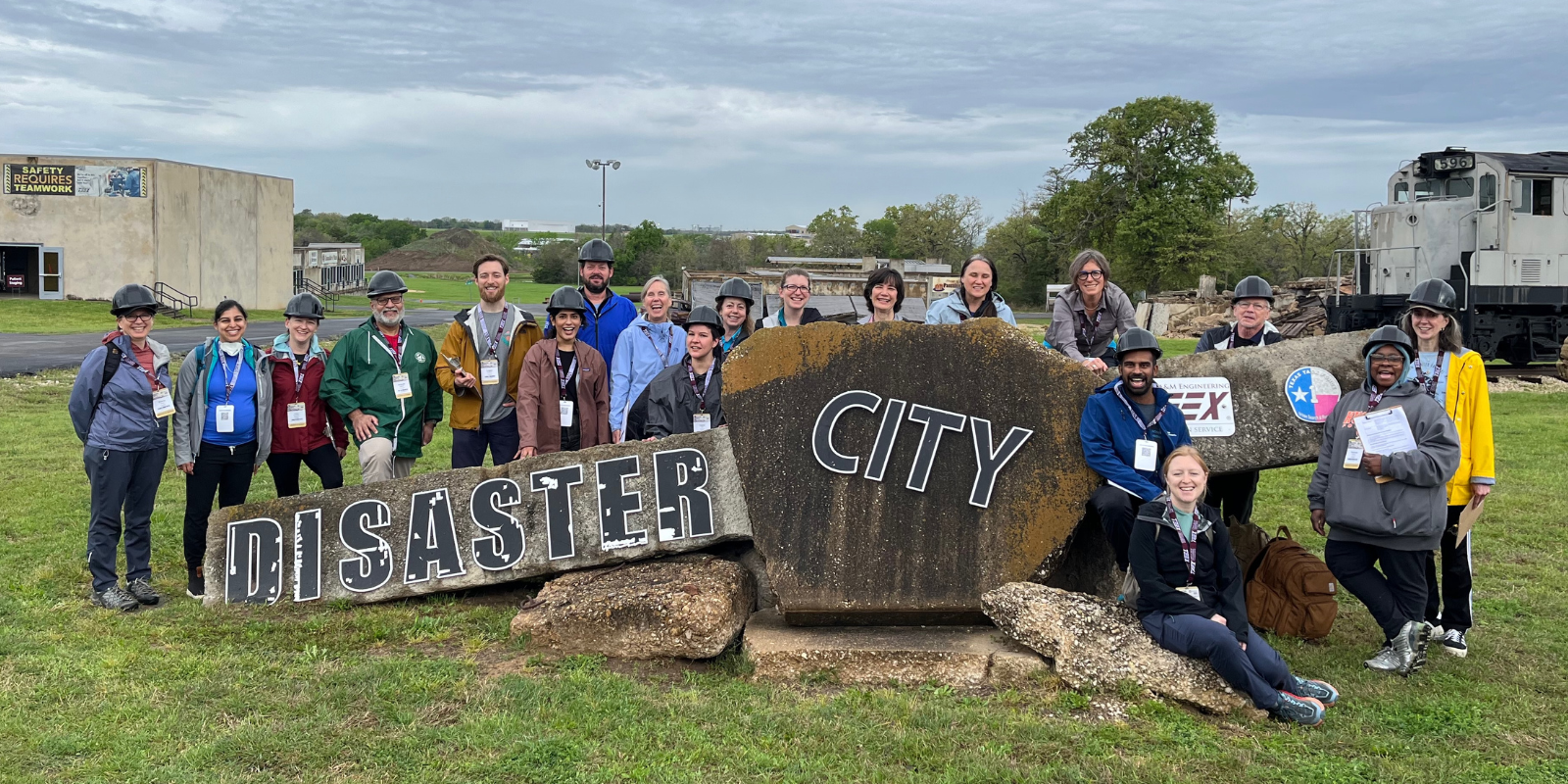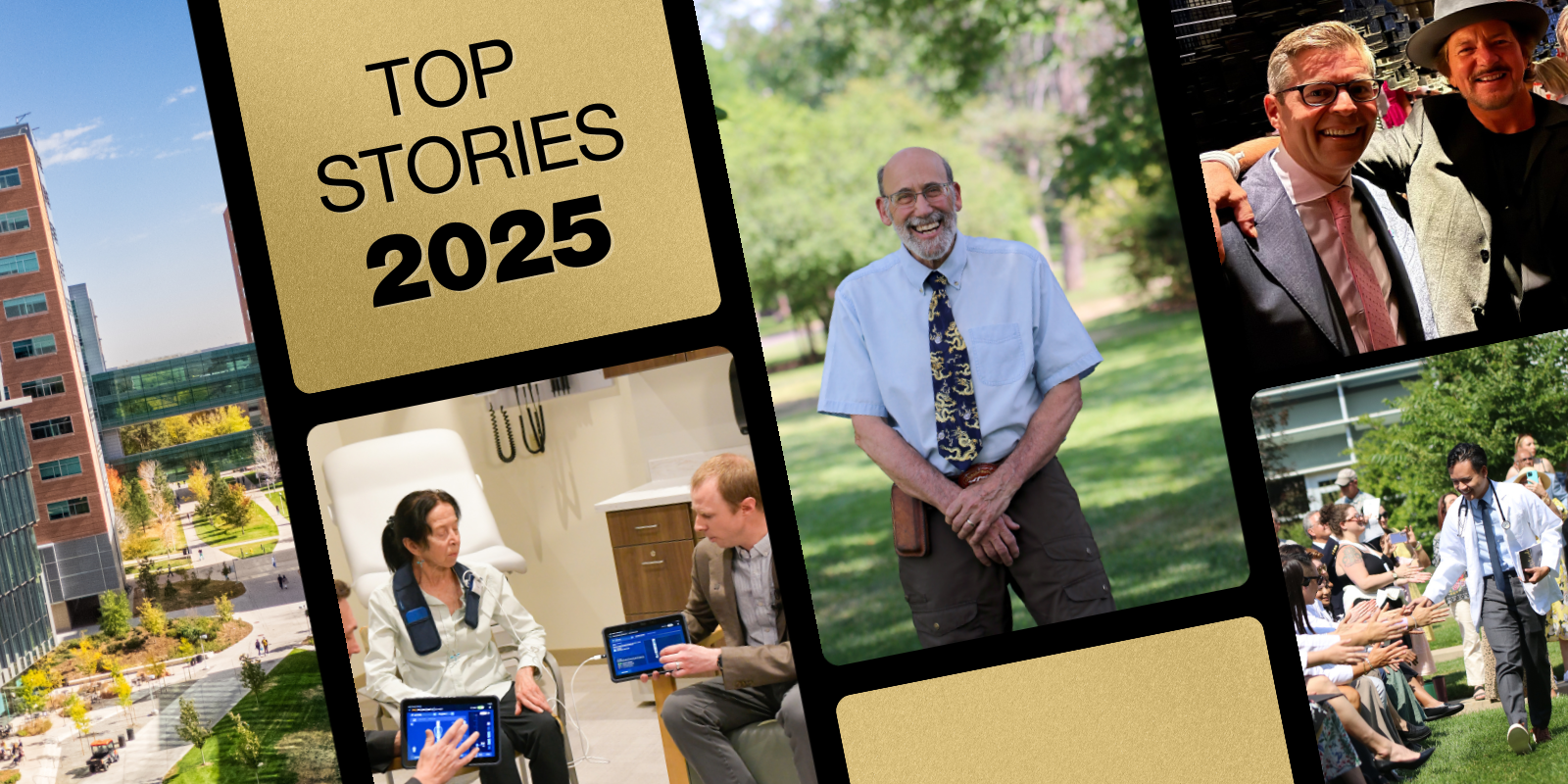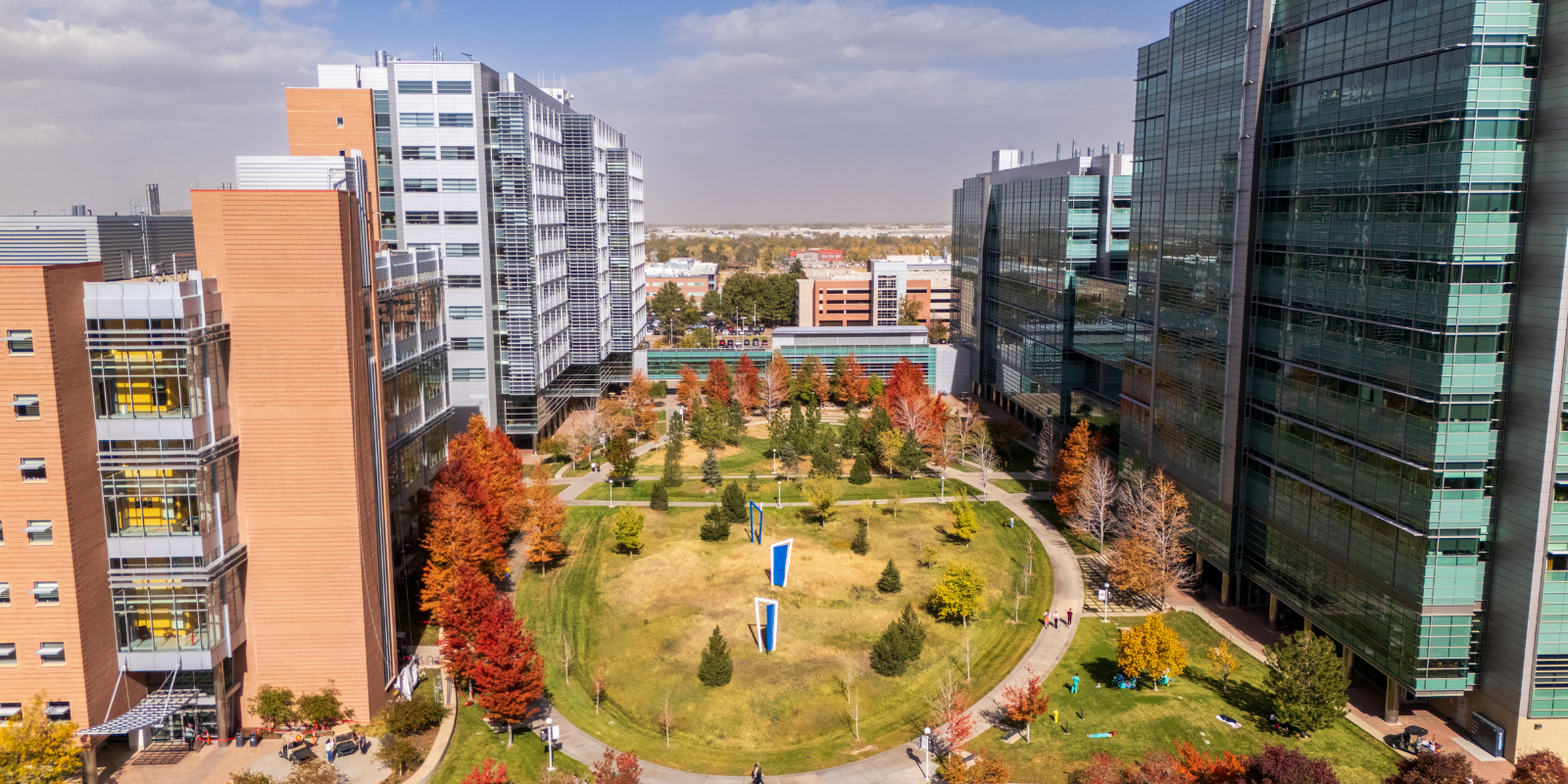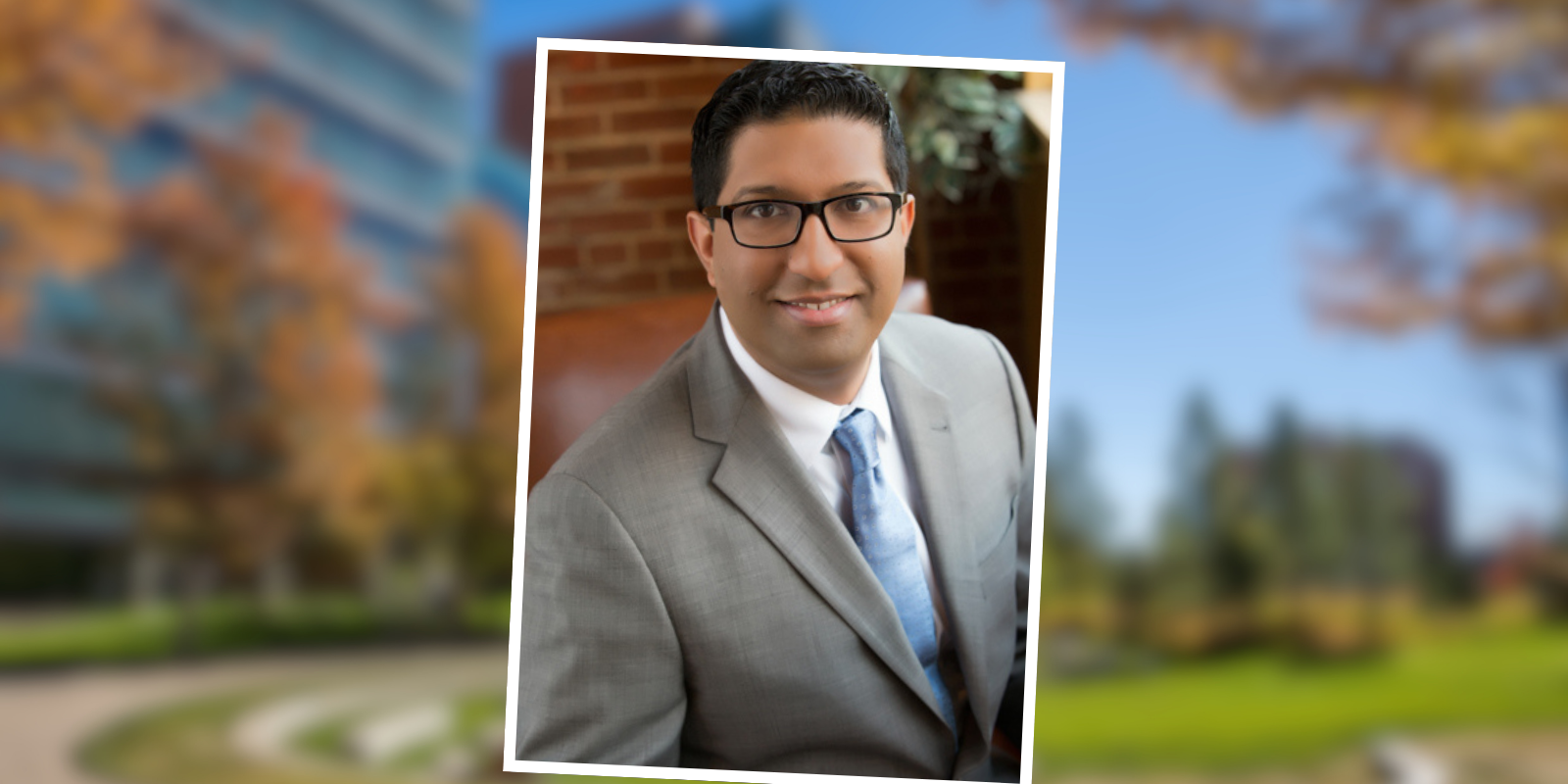In March, participants in the Diploma in Climate Medicine program at the University of Colorado School of Medicine traveled to Texas to take part in the largest student-run interprofessional emergency response simulation in the country.
Disaster Day, which celebrated its 17th anniversary this year, began as an educational opportunity for medical and nursing students at Texas A&M to learn interdisciplinary skills and methods. Since then, the event has grown to encompass their public health, dentistry, medical, pharmacy, and nursing schools, volunteers, and medical professionals – and this year, CU Climate Diplomates.
“One of the great things about Texas A&M is that we have an impressive set of capabilities and capacity, but we also have collaborative relationships that allow us to link everything together,” says Jason Moats, director of the USA Center for Rural Public Health Preparedness at Texas A&M University and a Disaster Day contributor. “Look at the pedigree of the folks we were able to collaborate within the CU Diploma of Climate Medicine program, from ER docs to the Indian Health Service. That is the epitome of what we try to do in health education and medical education.”

Jay Lemery, MD, Director of CU's Climate & Health program (right), and Jason Moats from Texas A&M Health’s School of Public Health (middle) discuss emergency response strategies with a Disaster Day facilitator at a simulated field hospital.
The two-day event took place at Texas A&M Engineering Extension Service’s (TEEX) Disaster City, part of a 300-acre training facility dedicated to training emergency responders. TEEX also designed a tailored, one-day disaster training specifically for CU Climate Diplomates before the annual Disaster Day.
Raj Sundar, MD, a family medicine physician currently pursuing his MBA at Boston University, was one of the CU Climate Diplomates who participated in this year’s event.
“Health care providers need specialized knowledge to address the growing health impacts of climate change,” Sundar says. “It was visceral experiencing this in real life and witnessing it firsthand.”
Addressing climate concerns
The climate disaster portion of the weekend featured a simulated flood, followed by an accident where a passenger train collided with a truck full of organophosphate pesticide. Around 850 students and professionals came together to simulate emergency operations and defensive care.
“CU is bringing the paradigm shift of how we respond to disasters on the climate side of things,” explains Shana Tarter, WEMT, FAWM, managing director of the Diploma in Climate Medicine. “Hospital and disaster preparedness based on historical methods is no longer going to work. We are helping to reframe how we respond to modern disasters.”

Simulated train crashes are part of the TEEX training facility Disaster City, located in College Station, Texas.
Weather and climate disaster events are an increasing concern for both civilians and those in the health care field. In 2024, the U.S. experienced 27 climate-related disasters that each caused losses exceeding $1 billion and resulted in multiple injuries and deaths. Climate disasters are deeply intertwined with patient care and emergency response, so the opportunity to work alongside medical professionals across fields is a unique and critical one.
“Seeing the interdisciplinary collaboration in action during realistic simulations provided valuable insights into how complex disaster scenarios require coordinated responses from different specialties,” Sundar says. “No single expertise can address these complex challenges alone.”
Cross-specialty collaboration
Disaster Day has become an opportunity for state partners and beyond.
“It’s become an interdisciplinary familiarization with capacities and capabilities inside a disaster context for many different groups,” Moats says.
Some of those groups include the Texas Department of State Health Services, whose emergency medical task forces provided an AMBUS, a multi-patient transport vehicle, for the simulation; the Texas Department of Public Safety, highway patrol, the New York Air National Guard, the Texas State Guard, the Texas A&M Forest Service, and the United States Air Force’s 59th Medical Wing, among others.
Including Diploma in Climate Medicine participants was the latest in an ever-growing collaboration.
In addition to the AMBUS, students and health care professionals had access to a mobile medical unit, which is akin to an ICU housed in a 53-foot semi-trailer. Portions of the event covered triage situations, critical care transportation, shelter operations, patient evacuation, and command structure, including an aeromedical evacuation that included patient movement aboard a C17 cargo aircraft.

Instructor Bobbie Jackson leads a tabletop exercise where participants navigate a cascading disaster scenario.
Sundar summed up his experience in three key principles: "Sweat now or bleed later," emphasizing how emergency drills build critical muscle memory; "Expertise has blind spots," focused on the way specialized teams need to partner to see the full picture; and "Readiness isn't free," meaning that organizations that survive disasters invest in flexible response capacity before crises hit.
Attendees and organizers say they were pleased with the success of this year’s Disaster Day, not only in numbers, but in the depth and breadth of knowledge and experience that was shared.
“While not every clinician will serve as a first responder during a disaster, the Diploma’s Certificate in Disaster Resilience and Response, which includes Disaster Day, prepares them to play a vital role—whether by updating their organization’s Emergency Operations Plan or creating individual action plans like heat response strategies,” says Bhargavi Chekuri, MD, director of the Diploma in Climate Medicine. “It’s essential that health care systems plan for the conditions we’ll face 20 years from now, not rely on the realities of 20 years ago.”



